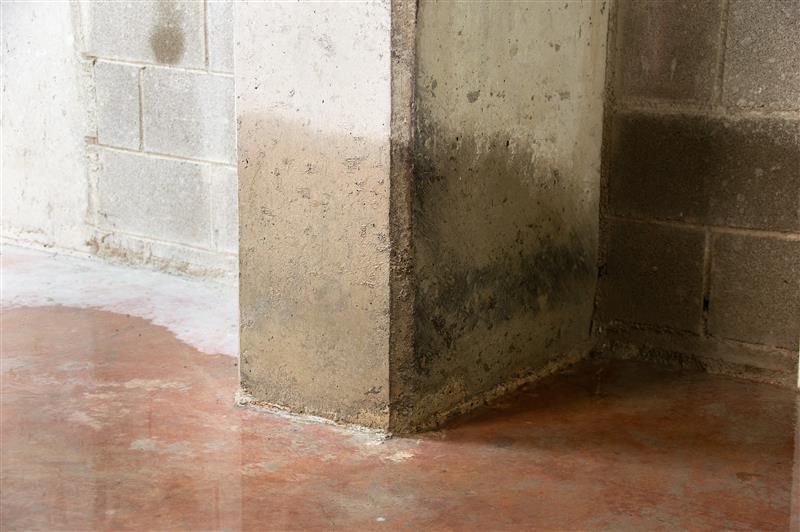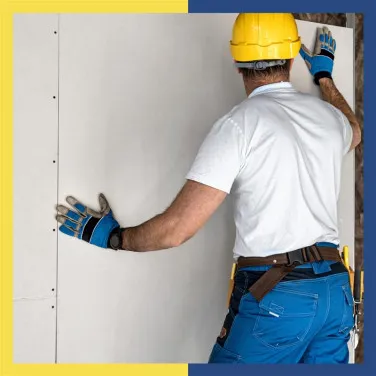Rebuilding after a flood: Essential wall repair and waterproofing tips
Floods can weaken your home’s structure, causing wall damage and other issues. This guide covers essential repair steps, from fixing cracked walls to waterproofing and long-term prevention.
Floods can be devastating, leaving behind a trail of destruction that extends beyond visible damage. One of the most concerning after-effects of a flood is structural damage, particularly cracked walls, which can compromise both the safety and aesthetics of the structure. Moreover, water infiltration can weaken walls, affect electrical systems, and lead to long-term deterioration if not addressed promptly. This guide will walk you through the essential steps of home repair, from assessing damage to using the right filling material for wall cracks and waterproofing techniques to prevent future issues.
Understanding the impact of flooding on wall structures
Floodwaters can severely affect a building’s structure, exposing weaknesses that may have gone unnoticed before. Water absorption causes shrinkage, leading to cracks in rigid surfaces like walls. The impact varies based on the construction material, with plaster, drywall, and masonry being particularly susceptible.
Other immediate concerns include –
- Electrical hazards – Many electrical lines are embedded within walls. Water infiltration can damage them, leading to short circuits and fire hazards.
- Foundation issues – Prolonged water exposure weakens foundations, making them prone to cracks and instability.
- Water logging and pocketing – Moisture gets trapped within walls, creating hidden damp spots that can lead to mould growth and further structural weakening.
- Pest infestation – Flood water attracts termites, rodents, and other pests, which can further damage wooden doors, cabinets, and structural components.
Identifying types of cracks and their causes
Not all wall cracks are the same. Understanding their nature helps determine the right wall crack solution.
- Hairline cracks – These are thin, surface-level cracks that may seem cosmetic but could indicate underlying moisture problems or structural load-bearing instability.
- Wide cracks – Larger cracks suggest deeper structural concerns, often resulting from foundation shifts or extreme water damage.
- Water stains and mould – If a crack has dark edges or moisture spots, it indicates prolonged exposure to damp conditions and potential mould growth.
Steps to take after a flood
If your region has experienced a flood recently, here’s a step-by-step guide on how to deal with the aftermath –
-
Ensure safety first
Before beginning crack repair on any damaged wall, disconnect all electrical lines to avoid hazards. Water-damaged wiring poses a significant risk and should be inspected by a professional before reconnection.
-
Remove standing water and improve ventilation
Floodwater carries contaminants, bacteria, and pests. Immediate removal is crucial to prevent further structural and health risks. If drainage is blocked, additional steps must be taken to clear pathways. Once water is removed, ensure walls dry completely by improving ventilation, using dehumidifiers, and applying heat if necessary.
-
Detect hidden water damage
Some damage, like water pocketing and waterlogging, is not visible to the naked eye. Technologies like infrared imaging and ultrasound detection can be used, though a simple touch test can also help—damp areas will feel cooler or mushy.
-
Assess structural flaws
While aesthetics are important, structural integrity takes priority. Inspect your home’s foundation for shifts, cracks, or weakened beams. If significant foundation damage is detected, professional retrofitting methods like scaffolding, underpinning, or re-strengthening with reinforcements may be required.
-
Fill and repair cracks
Once the structure is deemed safe, the next step for your home is to repair cracks –
A high-quality wall crack filling material, such as acrylic-based fillers, can seal minor gaps and hairline cracks
For wider cracks, use cement-based or epoxy fillers that provide stronger adhesion and prevent further expansion
Reinforce weak areas with mesh or fibre tape before applying fillers for additional stability
Preventive measures for flood-prone areas
Buildings in flood-prone areas should be structured in a way that can withstand them. Precautionary steps can reduce future damage –
- Elevate electrical installations – Keep wiring, switches, and sockets at a higher level to prevent water contact.
- Strengthen foundation and walls – Using thicker beams, reinforced columns, and sturdy footings enhances resistance against flood damage.
- Improve drainage systems – Proper slopes, rainwater harvesting, and well-maintained drainage channels help divert water away from your home.
- Raising the home level – Constructing homes slightly above ground level prevents water from easily seeping into living spaces.
How waterproofing helps
While floods can cause severe damage, waterproofing acts as a preventive measure, minimising its effects –
Reduces water absorption – Quality waterproofing and coatings limit water penetration into walls, preventing internal weakening.
Prevents waterlogging and pocketing – Sealed surfaces discourage moisture accumulation within walls, reducing hidden damage.
Minimises cracks – Waterproofing lowers the likelihood of structural shrinkage, thus reducing cracked wall formation over time.
Restoring aesthetics after repairs
Once the crack repair for any damaged wall is complete, it’s time to restore the beauty of your interiors –
- Painting and finishing – Choose water-resistant paints and breathable waterproof coatings to prevent future moisture damage.
- Texture application – Decorative plastering, wall panels, or textured paint can enhance the appearance of repaired surfaces.
- Sealing for longevity – Using waterproof primers and top coats prolongs the durability of repairs, ensuring a lasting finish.
Consult a professional today
Flood damage can leave your home vulnerable, but with proper restoration, safety and aesthetics can be revived. However, understanding the effects of flooding, choosing the right wall crack solution, and using appropriate waterproofing are things that only an expert can help with.
So, the moment homeowners want to effectively repair cracked walls and reinforce their properties against future water damage, they should consult a professional. With the right approach and preventive measures, you can restore your home’s strength and beauty, making it a safe and comfortable space once again.
To make your home secure with waterproofing, reach out to the experts at Dr. Fixit by filling out the form below.
Get Professional Waterproofing Solutions Today
Fill The Form below to took free site evaluation by Dr. fixit point safe painting service expert
Get Professional Waterproofing Solutions Today
Fill The Form below to took free site evaluation by Dr. fixit point safe painting service expert






